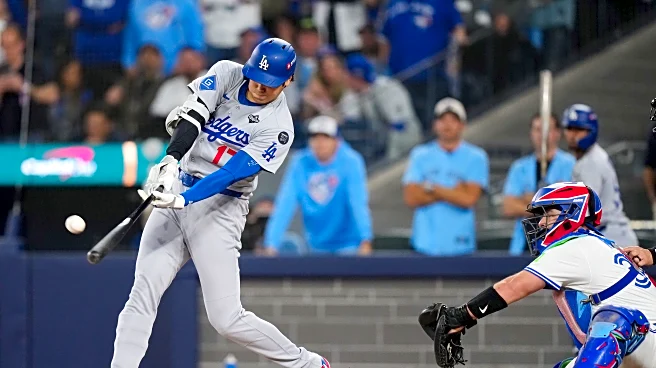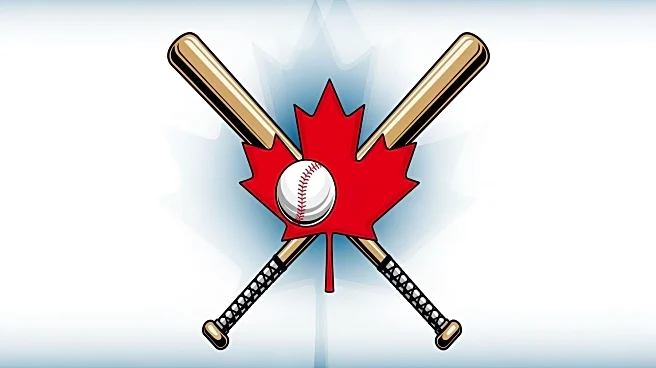What's Happening?
The Los Angeles Dodgers and Toronto Blue Jays are engaged in a marathon Game 3 of the World Series, which has extended into the 17th inning, marking it as the second-longest game in World Series history.
Shohei Ohtani, a standout player, has reached base eight times, including two home runs and two doubles, alongside four intentional walks. Clayton Kershaw, a future Hall of Famer, made a crucial appearance from the bullpen to help the Dodgers escape a bases-loaded situation. The Blue Jays have shown resilience, with Alejandro Kirk hitting a three-run homer in the fourth inning, keeping their hopes alive. The game has been marked by intense moments and strategic plays, with both teams striving for victory in this extended contest.
Why It's Important?
This extended game highlights the competitive nature and unpredictability of the World Series, showcasing the endurance and skill of the players involved. The performance of Shohei Ohtani and Clayton Kershaw underscores the impact of star players in crucial moments, potentially influencing team strategies and fan engagement. The outcome of this game could shift momentum in the series, affecting the psychological and tactical approaches of both teams in subsequent games. Additionally, the game's length and intensity may have implications for player fatigue and management decisions in the remaining series.
What's Next?
As the game continues, both teams will need to manage player fatigue and strategize effectively to secure a win. The Dodgers, having the advantage of playing at home, might leverage their familiarity with the field and crowd support. The Blue Jays, on the other hand, will aim to capitalize on their defensive strengths and key offensive plays. The outcome of this game could set the tone for the rest of the series, influencing team morale and tactical adjustments. Fans and analysts will be closely watching for any shifts in player performance and managerial decisions as the series progresses.
Beyond the Headlines
The extended nature of this game may prompt discussions about the physical demands placed on players during such lengthy contests, potentially influencing future considerations for game scheduling and player health protocols. The strategic use of star players like Ohtani and Kershaw in high-pressure situations highlights the importance of player management and could lead to debates on optimal utilization of talent in postseason games. Additionally, the game's historical significance as one of the longest in World Series history adds to the legacy and narrative of the teams involved.













